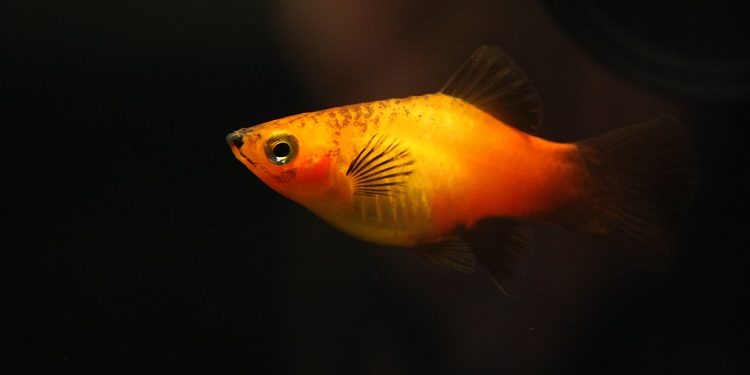For beginner aquarists, these hardy fish are a fantastic option. They can consume algae, plants, flakes, pellets, krill, and other fish foods.
These schooling fish are non-aggressive and tolerant to a wide range of conditions. They can be housed in a 10 gallon tank alongside neon tetras or Pygmy Corydoras.
1. Zebra Danio
Zebra Danios are an easy-care fish that can thrive in a variety of water conditions. They are a very popular aquarium addition and a great choice for beginners. They are also very social and peaceful and will make an excellent addition to any community tank.
They are a surface-oriented fish, so you’ll want to keep them with other schooling fish that swim near the water’s surface. They get along well with other fish species, even if they are not closely related, and tend to ignore aggressive or territorial fish. In the wild, zebra danios feed on worms, algae, mosquito larvae, and other small crustaceans. In the aquarium, they do best when fed quality flake food and fresh vegetable matter such as spinach, zucchini, shelled peas, and daphnia or bloodworms.
In the wild, zebra danios are found in flowing rivers, flooded rice fields, and ponds with shallow depths. They can live in either freshwater or brackish water and are a good fit for most tanks. However, if you’re planning on breeding them, you’ll need to set up a separate spawning tank.
2. Cherry Barbs
If you are looking for a fish that can add some color to your aquarium, then the Cherry Barb is the perfect choice. They are hardy and can tolerate a wide range of water conditions. However, they will thrive when kept in a tank that closely resembles their natural environment.
They prefer to live in groups and will do well with a variety of fish including zebra and celestial pearl danios. They also make good tank mates for other common cichlids and gouramis. However, it is best to avoid mixing them with aggressive fish such as large gouramis and goldfish.
They can eat a variety of foods, but they will enjoy eating tubifex worms, blood worms, brine shrimp, and even frozen meat and sinking pellets. Like other omnivores, they will be attracted to any greenery you have in your tank and can consume algae, plants, and even fruit. They are non-fussy and easy to care for, but should be fed two or three times a day. They can easily be overfed, so make sure that you keep a close eye on their food consumption.
3. Corydoras
A favorite of the beginner aquarist, the corydoras is a hardy species that thrives in most aquarium conditions. This genus of catfish has over 160 different types, but the most popular ones are the zebra and marble corys, albino corys and panda corys. They love to hang out at the bottom of the tank where they search for food crumbs or sift through substrate for algae.
These fish have a very peaceful nature and won’t bother other tank mates. They’re also a great choice for community tanks with other calm, tropical fish like rasboras or tetras. Their striped pattern, polka-dotted colors and orange fins make them especially beautiful.
One of the best things about this genus is that males and females are easily distinguished from each other by their long pointed anal fins. This makes breeding a breeze for beginners, but it’s important to keep in mind that unmonitored breeding can lead to overpopulation and eventual inbreeding.
4. Mollies
Mollies are colorful, hardy fish that make a great starter tropical aquarium fish. They can be found in a variety of colors and sizes, so there is sure to be one that fits your preferences. These non-fussy omnivores are easy to feed and enjoy eating regular fish flakes, live or frozen brine shrimp and Daphnia. Mollies also have long life spans and reproduce very quickly so you will likely have some guppy babies in no time.
These freshwater fish are native to North and South America, where they can be found in slow-moving tropical rivers teeming with vegetation. Mollies are naturally schooling fish and do well when kept in groups of six or more. They are a great choice for beginners because they are easy to care for and do not require a large tank.
Some of the more exotic varieties of mollies, such as sailfin mollies, can grow quite large. If you plan on introducing them to your aquarium, be aware that they may outgrow the standard 10-gallon tank and you will need to upgrade. It is also important to segregate male and female mollies as they can breed quite quickly. This can be easily accomplished by ensuring that the sexes are separated using a tank divider.
5. Goldfish
Goldfish are a fantastic choice for beginners because they’re extremely easy to care for. They can adapt to a variety of water conditions and are a great option for both indoor and outdoor fish tanks or ponds. They’re omnivores and can eat regular fish flakes, frozen or live brine shrimp, Daphnia, or blood worms. Additionally, they can often go a week or so without eating, which is perfect for beginner aquarists who may forget to feed their fish daily.
Goldfish can also come in a variety of shapes, sizes and colors, making them an excellent aquarium decoration. They also have the ability to learn basic commands, so you can train them to do tricks.
One particular Goldfish that’s a must-have for beginner fish owners is the Shubunkin goldfish. This variation of goldfish has a long body and fins that display a calico coloration with a mix of black, red, white and blue pigments. These unique characteristics make them a great aquarium fish for beginners and can be used as a colorful alternative to platies or guppies.

























